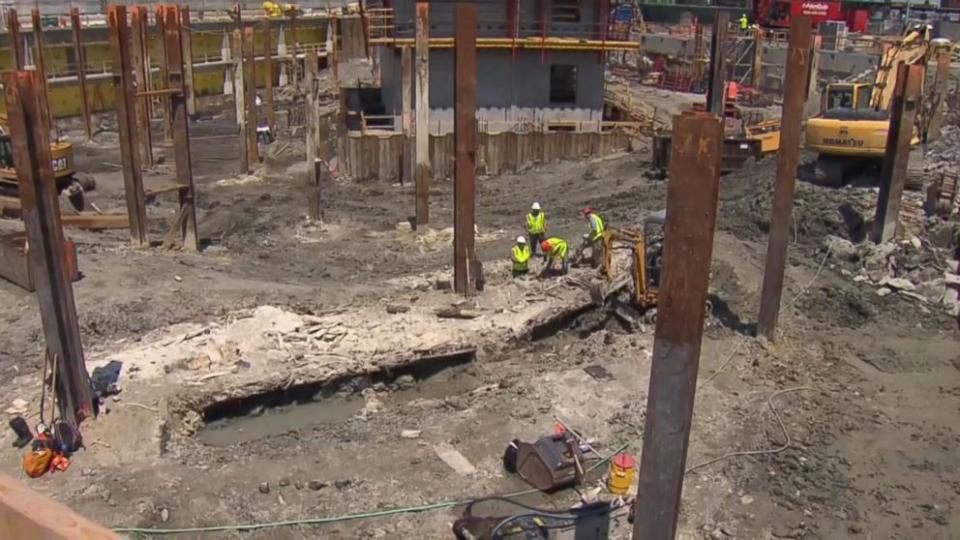
PHOTO: Time Magazine
Construction workers were working on a new building in this year’s spring warmth at the Boston waterfront, in the seaport area of the city. They’d been commissioned by Charley Leatherbee, vice president of development at Skanska USA Commercial development. When the crew began excavating to make room for the foundation that had to be put in, they stumbled across something unusual: the hull of an old ship.
They immediately alerted the Massachusetts Historical Comission and called in Boston’s city archaeologist, Joseph Bagley, to determine what exactly it was. Construction was halted on the site, and soon it gave way to archaeological investigation and excavation. The archaeological team, under Joseph Bagley, have been working on the site since May 26th, and what they’ve found has proved to be a new puzzle piece in the history of Boston.
The ship dates back to the mid to late 1800s. It sure seems odd to find a shipwreck that isn’t buried under the ocean, but it makes sense. The land where the ship was found used to be a mud flat that would be completely submerged at high tide. The ships could sail right over. That area of land wasn’t filled in until the late 1800s to make way for city development. Now, the area is home to office buildings, expensive condos, and upscale restaurants. But back when the ship sunk, it was all mud and water. It’s likely the ship was trying to sail for harbor when it was wrecked. But what caused it to sink? That was a question that Joseph Bagley sought to answer.
In their investigation, the archaeologists found a shattered ceramic vessel, a knife, construction equipment, and some loose nails. They also discovered that the ship was full of barells of lime, which was used at the time all across the United States for masonry and construction. If it got wet, though, it would be completely unusable. So the cargo was probably just left where it was. It would’ve been an enormous loss for both the crew and the merchant in charge of the vessel. It’s the only intact find of its size in the Boston area. Typically, ships would have been completely scavanged of their valuables within days of being wrecked.

PHOTO: yahoo
During the mid 1800s, Boston was going through a period of growth and something of a construction boom. It had been relatively small and economically stagnant in 1780, but in just twenty years, by 1800, it was booming. It had become a wealthy international trading port, a corner of the trade triangle between the Caribbean, North America, and England. It was chartered as a city in 1822. Higher education in the city was becoming increasingly important, as the Massachusetts Institute of Technology (MIT) had opened on November 1, 1865, and the Jesuits opened the Boston College in 1863, Emerson College in 1880, and the Simmons College for Women in 1899. Theaters and museums were being built, population was increasing rapidly, and the first subway in North America was opened in Boston on September 1, 1897.
It’s likely that this ship is just another piece in the story of Boston’s population and growth boom in the 1800s. The lime it carried has been sourced to Maine. Archaeologist Joseph Bagley also pointed out that lime in large quantities, mixed with water, can cause a dangerous chemical reaction. He thinks the barrels likely caught on fire, causing the ship to burn down.
Skansa has completely halted work on the site, even though they legally didn’t have to, to allow the archaeologists plenty of time to review the ship.
“[This find is] incredibly rare…there’s only been one other terrestrial shipwreck that’s been found in Boston, and that one was only very small.” – Archaeologist Joseph Bagley

